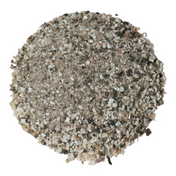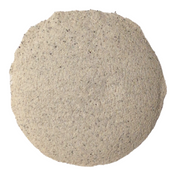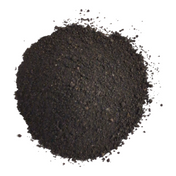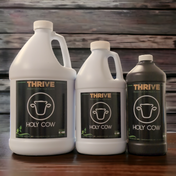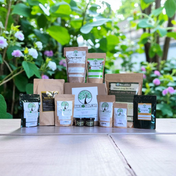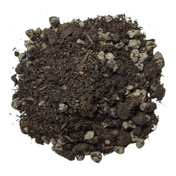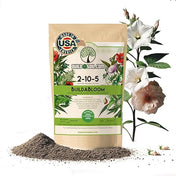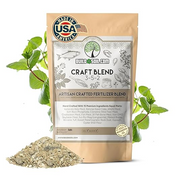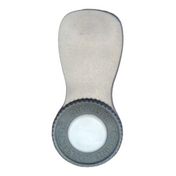Introduction
Continuous Credit to Clackamascoots, Gascanastan and all the others before me.
The reason we put this system together is for those that want to have a birds eye view of the entire process from start to finish. Many people want to grow naturally and just don't trust that it will work. Some are doing it now but they are missing some key element and it's not coming out quite right. Once you get the full picture and understand how flexible this whole system is you will "get it" and create your own system that works for you and your situation.
The ultimate goal is to use nothing but home made compost that has been created with all of the nutrients built in. If you can get to the point where your soil is so alive and healthy that all you have to do is plant a seed and add water, then you have arrived. Having the best soil doesn't have to take forever and in the mean time there are many Compost teas, Botanical Teas and fertilizer inputs that you can add to Build a soil for long term production.
The modern way is to use chemistry to make NPK and several micro-nutrients available to the plants through use of plant ready water soluble nutrients. The PH of the nutrient supply will heavily effect the outcome of the plant. This is the "Feeding the plant" Paradigm.
The organic way is to build a compost based on the plants that are high in nutrient content and to utilize organic amendments that work in harmony with the plant and the soil. The BuildASoil way is to combine premium compost materials with diverse mineral inputs and utilize biology along with science. We are constantly getting our soils tested and adjusting so you don't have to. We want diversity and we want it all in the soil. The nutrients aren't immediately available in the organic system, we will rely on the biology of the soil to naturally produce nutrients for our plants based on it's growing needs. The soil food web is the cornerstone to cultivating plants in a Living Organic Soil System. The soil life is active and healthy and helping to make these nutrients available, and the plants growing on this Living Organic Soil have free-choice of any nutrient they want, in balance, a balance designed by intelligent science and observation. But it doesn't come in a bottle. The other nice thing about Building A Soil for All Natural production indoors, is that you have a blank canvas to work with... you can literally build the best soil possible. While working on large outdoor farms, you have to work with the existing soil and improve it over time.

The System
This guide is for Vegetables and Medicinal Herbs but will work with most fast Annual flowering plants. If you have a strange plant that you want to grow, consider it's native soil and best recreate that. This information works absolutely perfect for food and medicinal herbs. The entire system is meant to be more sustainable and also use local resources when possible.
This information is mainly for growing in containers and raised beds for the home gardener. If using containers for the patio, the greenhouse, or indoors, use as much soil as you can afford. I prefer a minimum of 5-30 gallons of soil per plant if growing in containers. Tomato's love the half whiskey barrel size, but bigger wouldn't be an issue except for moving it around. The larger the soil volume in your container the easier it will be to keep moist and keep alive with many different microbes and critters. The smaller the container the more botanical teas and compost teas you will end up using along with a little more attention to detail.
Rule #1: Don't try to grow a plant, instead Build A Soil that does that for you: Use Premium inputs and get premium results. Your goal is to build the best soil possible and keep it like a pet. Keep it moist and alive as best as you can, input more than you take out and the soil will last forever as it continues to evolve and become more blessed with life.
Rule #2: Learn to make your own compost and your own Earthworm Castings: You would be surprised how small of a space you can make quality compost in. Search our website for "indoor compost" and you will see what I mean. But if you really can't do the whole compost or worm bin thing, then I suggest you learn to find a really good source for local compost that is affordable. If you can't find compost local then use our pure worm castings. The shipping keeps the price a little high, but my goal is to make this as affordable as possible for everyone to benefit from.
Rule#3: Use premium quality compost or earthworm castings, preferably home made. Yes I said this twice. It's that important.
Rule #4: Don't be tempted to go back to the bottled nutrients: Even if they say organic, because nothing will be as good as you own soil. The big bottled nutrient companies buy ingredients in bulk and often use soy and cotton that are GMO and full of pesticides. Get this right and your garden will be more productive and more nutritious than ever before. Don't worry about growing plants, focus on building soil!
Rule #5: Avoid ingredients that say they are organic but really aren't good for the environment. The Organic Label is slowly selling out in the marketplace depending on who is doing the certification. Don't worry if it's not organic as long as you know where it came from and that it is good stuff. Think about each ingredient in the products you purchase. Just because the nutrients at the grow shop have cool labels and high prices does not mean that they will grow better plants.
Rule #6: No matter what else you do, make sure you MULCH. If you skip Mulching you are missing the boat.
Integrated Pest Management: Use a basic home made pest spray every 3-7 days during vegetative growth phase for pest prevention.
Seedling or Cuttings:
SCHEDULE:
Soil Recipe: (Purchase From Us, Purchase the DIY kit from us, or completely make it yourself)
Build A Soil From Scratch with 3 Proven Recipes
Take N' Bake soil recipe - 9 Cubic Feet (70 Gallons)
BuildASoil Pre Made Soils - Check out what we make!
How to prepare your soil for planting:
Ideally we want to get our soil out of the bag and into the grow containers and in the actual grow space we are using. If you are going to use some soil for cloning or seedlings you can do the same thing in very small containers however most growers just use soil without the cover crop and top dressings until transplanted into their final homes. It’s up to you!
- Pour soil into container. (15 Gallons Per Plant Minimum)
- Water slowly to evenly saturate. (We use the Chapin 1949 Sprayer) Use 10% by volume water or 1 gallon for every 10 gallons of soil used. Tip: Use Aloe and or Quillaja Extract to help hydrate the Hydrophobic Peatmoss.
- Sprinkle ¼ cup of craft blend per plant around the base. (Or Any well rounded organic amendments).
- Follow this with 1/8 cup per plant gro-kashi or home made Bokashi.
- Cover all of this with about ½” of our BuildAFlower Topdress or your own Vermicompost.
- Add 10-20 Red Wigglers per container of soil used as budget will allow.
- Sow Cover Crop at a rate of 1 tsp per sq. ft. of your soil container. Basically just sprinkle it everywhere evenly
- Last cover with thin layer of barley straw or any of your preferred mulch. Careful to leave it fluffy enough or thin enough for the cover crop to sprout through. Although the cover is pretty good at it so don’t worry about it too much.
- Gently mist or water in so as to bring this whole top dressing all together and to moisten the straw.
Now that you have prepared your soil you are ready to follow our proven and simple schedule. Here are the options you have!
WATER ONLY? If you follow the above steps and avoid growing a plant that is to large, you can use water only the whole cycle and get amazing results.
New Growers Start Here:
New Living Soil No-Till Container Setup Guide: View PDF Here
BuildASoil Classic (Water Only) Protocol: PDF Download
This method is focused on 15 gallon minimum container size and water only production using the mulch layer, cover crop, Rootwise biology and a wetting agent. It's the most simple straight forward way to learn the fundamental principles of growing the BuildASoil Way. Once you have done this at least once, you can then begin to appreciate the benefits of any supplements you use. Water only is the truth and we urge you to try this method.
BuildASoil Supplemental Feeding Chart:
This method is focused on when you want to feed the soil and plant with supplemental inputs to boost yield and quality. While many growers strive to follow the above Water only style, most growers enjoy treating their soil and plants to a weekly regiment that will spoil them. To do this, we have created the new updated BuildASoil Supplemental Feed Schedule and this will go perfect along with the Environmental protocol and Initial Container Setup guide.
Earthbox Method:
The simplest way to slay. These earthboxes eliminate the biggest learning curve in growing, how to water properly! With the sub-irrigation system contained in a small food grade plastic container you can get phenomenal results with 10 gallons of soil and the 3 gallon reservoir for clean water that is built right in. Not only that, if you overgrow your plant size you can always topdress HEAVY in an earthbox and the plants will eat anything you put in there.
Step 1: Follow Initial Container Setup guide above the same as any other container. Keep in mind that Earthboxes need to have their wicking corners packed.
Step 2: Follow BuildASoil Classic method, be sure to flip to flower sooner than you think as the plants explode with growth.
When To Fill?
Top water one time and then let the plant grow for 5-10 days. After the plants has grown and looks to be happy you can commence bottom watering. We want to avoid bottom watering before the plant can handle it.
Once you have filled the reservoir for the first time, you will then wait until the reservoir is completely empty. This allows for the ideal level of moisture at all times without keeping it too wet.
What happens if my plant grows bigger than anticipated in the Earthbox? Step 2 above recommends flipping to flower early enough to support the rapid growth, should you overshoot the size you can do two things:
1. Topdressing in Earthbox can be mounded extra high above the walls of the Earthbox. This is because of the plastic covers and the fact we are bottom watering. This topdressing will feed the feeder roots keeping your plants full of nutrients.
2. You can follow theBuildASoil Way Supplemental feeding chart above and water this into the TOP of the earthbox ideally on days the reservoir is dry. Either way, once your plant is going quickly, it's safe to water the mulch layer with goodies once per week or even more if you wish.
What Is Living Organic Soil?
The term “Living Organic Soil” was created to make it easier to explain a new style of growing that was emerging. Back then, if you said you grew in organic soil, people assumed you meant potting soil with bottled nutrients. You have to understand the setting at that time. Overgrow grow forums had been shut down. There were raids on hydro shops that had lists of customers with illegal grows. Seedbanks overseas were thought to be involved and this created hysteria about getting caught.
Back then, cannabis growers were a captive audience that couldn’t ask many questions about how to grow. This created the perfect marketplace to sell to and the standard method for organic growers was to use premium potting soil with expensive organic bottled nutrients. At harvest, you would toss it all and start over again each time.
Years later, emerging legal markets started opening up communication among growers and you started to read about methods like: Subcools super soil, The Revs True Living Organics, Tom Hills Grow Big Trees Recipe. There were attempts to commercialize “Super Soil” but it’s really best made at home and all of these methods still usually ended in the grower tossing all of the soil out and starting again from scratch. Because of this, only the die hard soil growers would continue run after run and much of this spawned the initial conversations that eventually became the No Till Living Organic Soil methodology.
Talking grower to grower, explaining all the differences was a mouthful. So for those growers that had seen it all, we knew this was something very different. Eventually, the community started calling the new methods “Living Organic Soil” after a thread appeared on the forums titled Living Organic Soil from Start Through Recycling (sometimes called the ROLS thread). Gascanastan started the thread, and right away Clackamas Coot jumped in on page one with his recipe. Those early posts, and the people who contributed to them, were instrumental in shaping what became the Living Soil movement.
As more growers tried these recipes, a new approach began to take shape. Originally, the cycle was simple: run your plants in something like a 5 gallon pot, then dump out the container at harvest and “recycle” the soil by amending it with a list of ingredients everyone was discussing. Over time, growers began moving to larger containers for bigger plants and better yields. That’s when we realized recycling soil outside of its container was unnecessary work and could even harm the ecosystem we had built. The first no till grows appeared, and soon it was a race to the big beds. Growers were filling 100 gallon outdoor pots and 4x4 raised beds, indoors and out, and the results were incredible. That’s when Living Organic Soil truly came into its own.
What Makes It Different?
It’s alive. Once you fill a container with Living Organic Soil, you add compost, microbes, worms, and other ingredients that kickstart a living ecosystem. Under ideal conditions, you will soon see tiny beneficial critters moving across the soil surface. This life is the foundation of the system, just like in the healthiest natural gardens. (Don’t worry, these little critters are beneficial and will stay inside your ecosystem)
Before diving deeper into the soil food web, understand this: when you follow a proven Living Organic Soil recipe, the biology will appear as if by magic.
Think of this way, what happens when you make a birdhouse and put it in a proper location? Do birds appear and use the home? Yes of course, in fact there may be bird-fights over the new house by multiple birds. One must not worry about how to make the bird, but rather just provide the proper home and the rest is taken care of by nature. So, when you Build A Soil, you will use ingredients that naturally create the perfect home for biology and the rest happens by nature.
Why Does It Matter That It’s Alive?
There is a myth in organic gardening that plants need water soluble nutrients to thrive. In reality, nature’s system contains almost none, relying instead on processes like rhizophagy, where plants use endocytosis to absorb nutrients, something once thought possible only for animals. When you work with living soil, you harness these natural processes and free yourself from dependence on liquid nutrients.
Made From Scratch
When Living Organic Soil began, most other “organic” methods recommended starting with a bagged potting soil and adding amendments. That is like cooking with canned ingredients versus making a meal from scratch, it is night and day.
The main challenge was defining what “premium compost” really meant. If you started with poor compost, the method didn’t work. Before companies like BuildASoil existed, finding quality compost was a huge barrier. You had to call suppliers all over the country and pay outrageous shipping rates for something you couldn’t find locally.
Key Differences in Living Organic Soil
Living Organic Soil stands out for a few big reasons:
-
Premium compost and/or castings
-
Lots of rock dust
-
Pumice instead of perlite
-
Mulch layer use
-
Topdressing instead of “Super Soil” layering
-
Worms living in the container
-
Cover crops in the soil
This combination creates a heavier, more nutrient dense soil that grows healthier plants.
How It Compared to Other Popular Methods
-
Super Soil – Built by placing a “hot” mix in the bottom half of the pot and plain soil on top, with the idea that roots would grow down into the nutrients later. We learned roots grow everywhere immediately, and in nature, nutrients are concentrated in the top layer, not the bottom.
- True Living Organics – The Rev’s method used smaller containers with “spikes” and layers of amendments.
- Tom Hill’s Grow Big Trees Mix – Started with bagged potting soil, chicken manure, steamed bone meal, gypsum, and perlite for huge outdoor plants. Later we found out that many of these ingredients were labeled “organic” but weren’t, and the perlite based medium wasn’t built to last.
Tying It All Together
When growing was still illegal everywhere, recipes were shared that relied on supplies from big box stores for the sake of secrecy and convenience. But as the internet connected us, we learned that from scratch soils with pumice, premium compost, and plenty of rock dust could be kept indefinitely. Bagged soils were never built for that, they broke down, floated perlite to the surface, and lost their structure.
BuildASoil didn’t invent this movement, we helped refine it so that new growers could get started without dedicating years to reading forum threads and chasing down obscure ingredients. Today, you can visit BuildASoil.com, order exactly what you need, and get support the whole way.
Think farmer, not scientist. Think alive, not sterile.
If you are like me (and reading this deep on an organic soil website means you probably are), you have noticed how our culture has long feared microbes. I avoid hand sanitizer and unnecessary antibiotics for the same reason, I believe in working with the microbiome, not against it. For years, people said bringing raised bed style organic growing indoors would not work. They claimed you would get pests, diseases, and poor results. The hydroponics industry pushed sterile systems as the only way forward. But the truth is, you can grow cannabis the same way you would grow your grandmother’s tomatoes and get better results, even indoors.
Back then, some instructors even taught people to “sterilize” soil by baking it in the oven. Now, living soil growers have solutions for nearly every challenge, all by mimicking nature. It is no surprise that living soil is quickly becoming the most popular style for home growers across the country.



